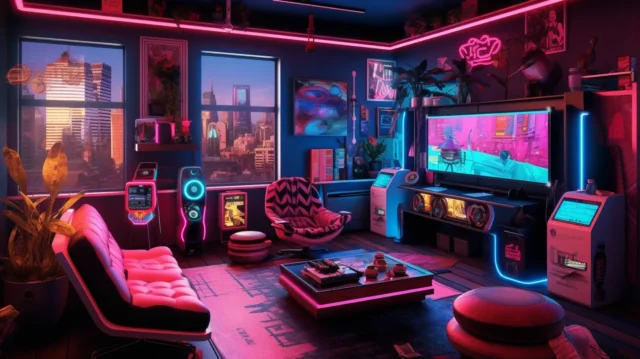
The concept of designing homes has entered a new era with the advent of artificial intelligence (AI). Gone are the days when crafting your dream home was a time-consuming, expensive, and often frustrating process. Today, AI-driven platforms are revolutionizing home design by offering customized, efficient, and innovative solutions that cater to the unique preferences and requirements of individuals.
Key Highlights:
- Instant Customization: AI platforms like Maket.ai and Planner 5D have democratized the design process, allowing users to generate personalized floor plans and visualize interior and exterior spaces within minutes.
- Diverse Design Styles: Users can explore a myriad of design styles, from contemporary to classic, and see them come to life through photorealistic renderings.
- Cost and Time Efficiency: By automating the design process, these tools save time and reduce costs, making professional design services accessible to a wider audience.
- Smart Planning for Smart Cities: AI is not limited to residential spaces; it also plays a pivotal role in designing smart cities and large-scale structures, optimizing for functionality, aesthetics, and sustainability.
- Accessibility and Ease of Use: With platforms available on multiple devices, including Windows, Mac, iOS, and Android, users can start designing anytime, anywhere.
The Power of AI in Home Design
- Customization and Visualization: Tools like RoomsGPT and Archi AI enable users to upload photos of their spaces and receive tailored design ideas. These platforms offer an intuitive interface where users can specify their preferences and instantly visualize potential designs for their living spaces.
- From Large-Scale to Residential: AI’s capability extends beyond residential homes, offering solutions for designing complex structures like airports and museums. It uses data on human behavior to optimize space functionality, demonstrating its versatility in various architectural applications.
- Bridging Tradition and Innovation: By integrating AI with parametric architecture, architects can create designs that challenge traditional boundaries, enabling the creation of unique and intricate structures.
- Facilitating Smart Urban Living: The rise of smart cities showcases how AI can enhance urban life. By making buildings and infrastructure more responsive to the needs of its inhabitants, AI promotes sustainability and efficiency in urban design.
- The Future of Home Design: As AI technology evolves, its role in architecture and home design promises to expand. By embracing AI, architects and designers can unlock unprecedented levels of creativity and innovation, paving the way for homes that are not just visually appealing but are also functional, sustainable, and tailored to the needs of their occupants.
Overcoming Challenges
Despite its potential, AI in home design is not without challenges. One significant concern is the bias inherent in AI algorithms, which can limit the diversity of design outputs. Efforts are underway to develop more culturally inclusive AI models that can produce a wider range of architectural styles and solutions.
AI-powered home design tools are transforming the way we imagine and create living spaces. By offering customization, efficiency, and a plethora of design options, these platforms are making the dream home a reality for more people than ever before. As the technology continues to evolve, the future of home design looks promising, with AI at the forefront of innovation.
The transformation brought about by AI in home design is profound and multifaceted, offering a glimpse into the future of architecture where creativity and technology merge to create spaces that are not only aesthetically pleasing but deeply personal and sustainable.








